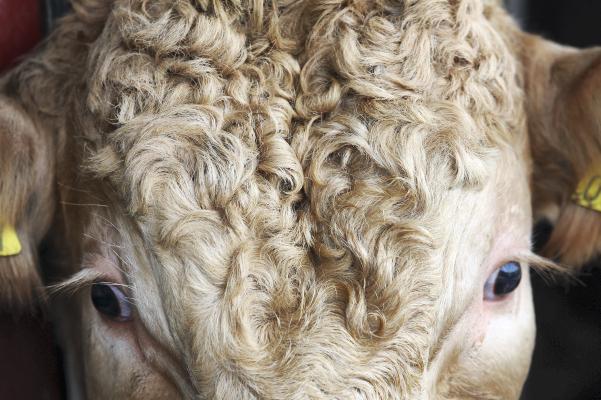The first batch of spring 2012 born steers killed out at an average of 351kg deadweight. These were housed in mid-September and have been finished on an average of 16kg of first cut silage and 6kg of meal.
Despite the good grazing conditions in September, I preferred to get these heavier cattle housed and utilise the autumn grass with younger, lighter cattle.
The ration I am using consists of 300kg of rolled barley, 250kg of maize meal, 175kg of soya hulls, 125kg of soya bean, 100kg of maize distillers with 25kg of molasses and 25kg of a general beef mineral. This is 16% crude protein fresh weight with an ME of 12.9 on a dry matter basis.
Although these finishing cattle could do with less protein, I only have one meal bin and this ration is also being used for autumn calving cows and weanlings and these animals have a higher demand for protein.
Silage quality is 23.4% dry matter, 10.3ME and 10.8 crude protein with a D-Value of 64, so it is just about average quality.
Since housing, the steers have averaged over 1.4kg of a daily liveweight gain. They are killing out at 57% which results in a daily carcaseweight gain of 0.8kg. This is an income of £3.04 per day, at a beef price of £3.80/kg. The daily feed cost averaged £1.58/day with the silage valued at £20 per tonne and the meal costing £210 per tonne this autumn.
The average age of the steers is 20.5 months at slaughter. I am happy with the performance of these cattle and expect the remainder of the steers to finish at a similar weight. All steers should be finished by early December.
Having these steers slaughtered now is freeing up much needed housing space for this year’s spring born calves.
One result of increasing the farm’s stocking rate is that winter accommodation is coming under pressure and I will have to consider building another beef house. I still have grass available for these calves, but it is the regrowth on paddocks last grazed out in late October.
While there is a temptation to graze this, I will house these calves and save this grass for spring grazing. I will get much better value from grazing this grass next spring when the energy levels in the sward should be much higher. These calves were weaned in mid-October with the cows housed.
In the past, I would have kept these calves sucking the cows longer by on-off grazing, but this year I just weaned them off completely. This has helped to save silage as I have been able to restrict dry cows to 30kg per day, with calves only eating 1.5kg of meal at grass. At weaning the heifer calves averaged 255kg and had a daily liveweight gain of 1.01kg/day since birth.
The steers averaged 285kg and had a weight gain of 1.1kg/day from birth. Some of these calves got off to a poor start last spring due to the late turnout and re-housing. They have done exceptionally well in the second half of the summer.
Since weaning, these calves have continued to thrive and it will be interesting to weigh these animals again at housing to see if the weight gain was maintained at grass after weaning.
All of the cows were also weighed at weaning, which allowed me to calculate the weaning percentage of different cows – basically by dividing the weaning weight of the calf (corrected for 200 days) by the weight of the cow. The average was 41% of calf liveweight being weaned from the cow’s liveweight. The average cow’s weight was 608kg at an average body condition score of 3.0. The most efficient cow weaned 54% of her liveweight, while the least efficient cow weaned just 29% of her liveweight. I have always found that monitoring animal performance through regular weighing to be the basis for making decisions.
Completing this exercise helps indicate which cows should be used as the foundation for breeding replacements and which should be earmarked for culling.
The top 10 cows averaged 578kg and weaned an average weight of 290kg, or 50% of their liveweight, whereas the bottom 10 cows averaged 661kg and only weaned an average weight of 217kg, or 33% of their liveweight.
Heavier cows do not always wean heavier calves. I am aiming for a 580kg to 600kg cow, which can consistently wean 50% of her liveweight and maintain body condition.
I have found the Limousin X Salers cow to be most capable of achieving this, while also achieving good levels of fertility and low mortality.






 This is a subscriber-only article
This is a subscriber-only article










SHARING OPTIONS: